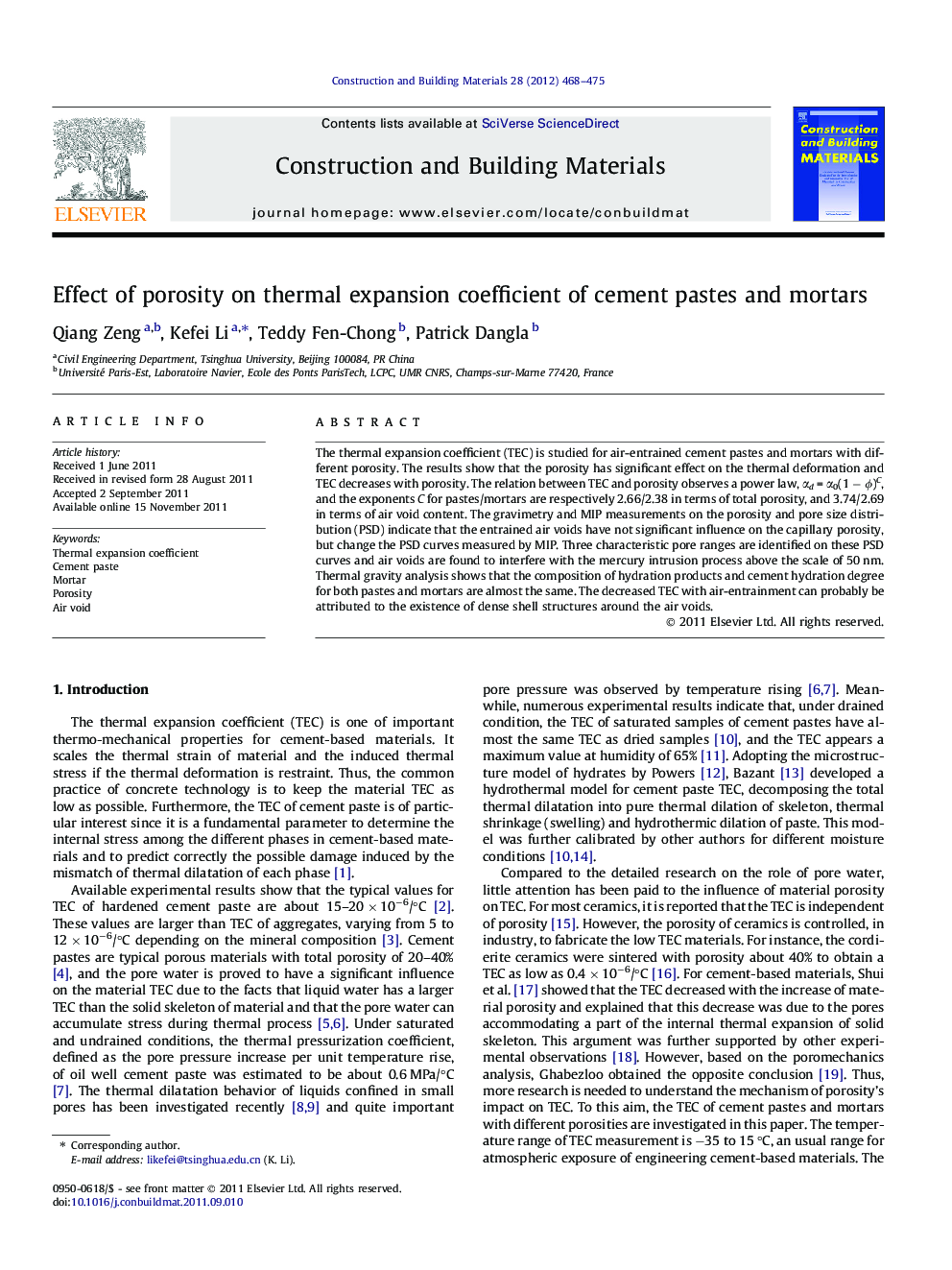| Article ID | Journal | Published Year | Pages | File Type |
|---|---|---|---|---|
| 259599 | Construction and Building Materials | 2012 | 8 Pages |
The thermal expansion coefficient (TEC) is studied for air-entrained cement pastes and mortars with different porosity. The results show that the porosity has significant effect on the thermal deformation and TEC decreases with porosity. The relation between TEC and porosity observes a power law, αd = α0(1 − ϕ)C, and the exponents C for pastes/mortars are respectively 2.66/2.38 in terms of total porosity, and 3.74/2.69 in terms of air void content. The gravimetry and MIP measurements on the porosity and pore size distribution (PSD) indicate that the entrained air voids have not significant influence on the capillary porosity, but change the PSD curves measured by MIP. Three characteristic pore ranges are identified on these PSD curves and air voids are found to interfere with the mercury intrusion process above the scale of 50 nm. Thermal gravity analysis shows that the composition of hydration products and cement hydration degree for both pastes and mortars are almost the same. The decreased TEC with air-entrainment can probably be attributed to the existence of dense shell structures around the air voids.
Graphical abstractWe measured the thermal expansion coefficient (TEC) of cement pastes and mortars with different air void contents. Different from the classical thermo-elastic statement and derivation by Ghabezloo (Constr Build Mater 2010;24:1796–1798), our results show that TEC decreases with porosity following a power law for both cement pastes and mortars (see Figure above). The main cause for the decreased TEC with air void contents may be the dense shell structure formed around the air void.Figure optionsDownload full-size imageDownload as PowerPoint slideHighlights► We measured the TEC of cement pastes and mortars entrained with air voids. ► We quantify the pore size distribution by MIP and the composites by TGA. ► The TEC decreases with total porosity and air void content. ► Dense shell around air void may be responsible for the decrease of TEC with air void cotent.
